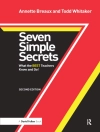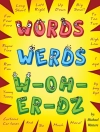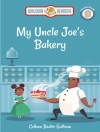‘Finally, a book with sound research and ready-to-use strategies to connect reading and science!’
—Jenny Sue Flannagan, Director, Martinson Center for Mathematics and Science, School of Education, Regent University
‘This work shows how reading scientific texts differs from reading literary texts and describes the tools teachers need to teach reading in science.’
—Stephen P. Norris, Canada Research Chair in Scientific Literacy, University of Alberta
‘The authors address what few recognize—that reading is an issue in science, but ultimately no one is teaching students to read science.’
—Sally Koczan, Science Teacher, Wydown Middle School, Clayton, MO
Boost students′ understanding of science with literacy strategies!
Research has long supported the positive effects of integrating literacy practices into the science curriculum; now this helpful and timely resource offers science educators effective strategies that they can implement immediately. Teachers of students in Grades 3–8 will find innovative ideas—aligned with national science education standards—for incorporating language analysis and science literature into inquiry-based science classrooms. Included are activities as well as sample lessons to help students:
- Read and comprehend science texts
- Find related resources to explore particular interests
- Build their science vocabulary
- Write to learn science concepts
This volume is valuable for teachers, leaders of professional development workshops, institutes, topical seminars in science and literacy, science and reading methods courses, and study groups.
Содержание
Foreword by Sandra K. Abell
Acknowledgments
About the Authors
About the Co-Authors
1. Teaching Science as Inquiry
Inquiry-Based Science
Language and Literacy in Inquiry-Based Science
Overview of This Book
2. The Challenges of Science Reading
What Does It Take to Comprehend a Text?
Linguistic Challenges of Science Reading
Conclusion
3. Using Trade Books to Support Science Inquiry
Why Read Trade Books in Science?
Award-Winning Science Trade Books
Becoming Familiar With the Format of Science Trade Books
Using Trade Books to Empower Science Learning
Conclusion
4. Learning Language, Learning Science
Building a Language-Rich Science Curriculum
Developing Vocabulary Knowledge
Learning About Nouns
Disentangling Discourse
Conclusion
5. Scaffolding Reading Through Strategy Instruction
Reading Strategy Instruction and Text Comprehension
Reading Strategy Instruction in Action: A Vignette
Bootstrapping Comprehension: Activating and Integrating Prior Knowledge
Monitoring Comprehension: Promoting Thinking During Reading
Consolidating Comprehension: Organizing Information From Text
Principles and Practice of Reading Strategy Instruction in Science
Conclusion
6. Learning to Write and Writing to Learn in Science
Why Write in Science?
Learning to Write Scientifically
Writing to Learn in Science: An Instructional Framework
Implementing the Writing-to-Learn-Science Instructional Model
Classroom Activities That Promote Writing to Learn Science
Conclusion
Endnotes
References
Index
Об авторе
Rose M. Pringle is associate professor of science education at the University of Florida School of Teaching and Learning. Her areas of research include preservice teachers’ positionality as science learners and issues associated with learning to teach inquiry-based science. She is particularly interested in working towards increasing the participation of minorities, especially girls of African descent, into mathematics and science related careers. Pringle is currently exploring the relationship between science teachers’ and counselors’ expectations and African American girls’ self-perception as science and mathematics learners.












